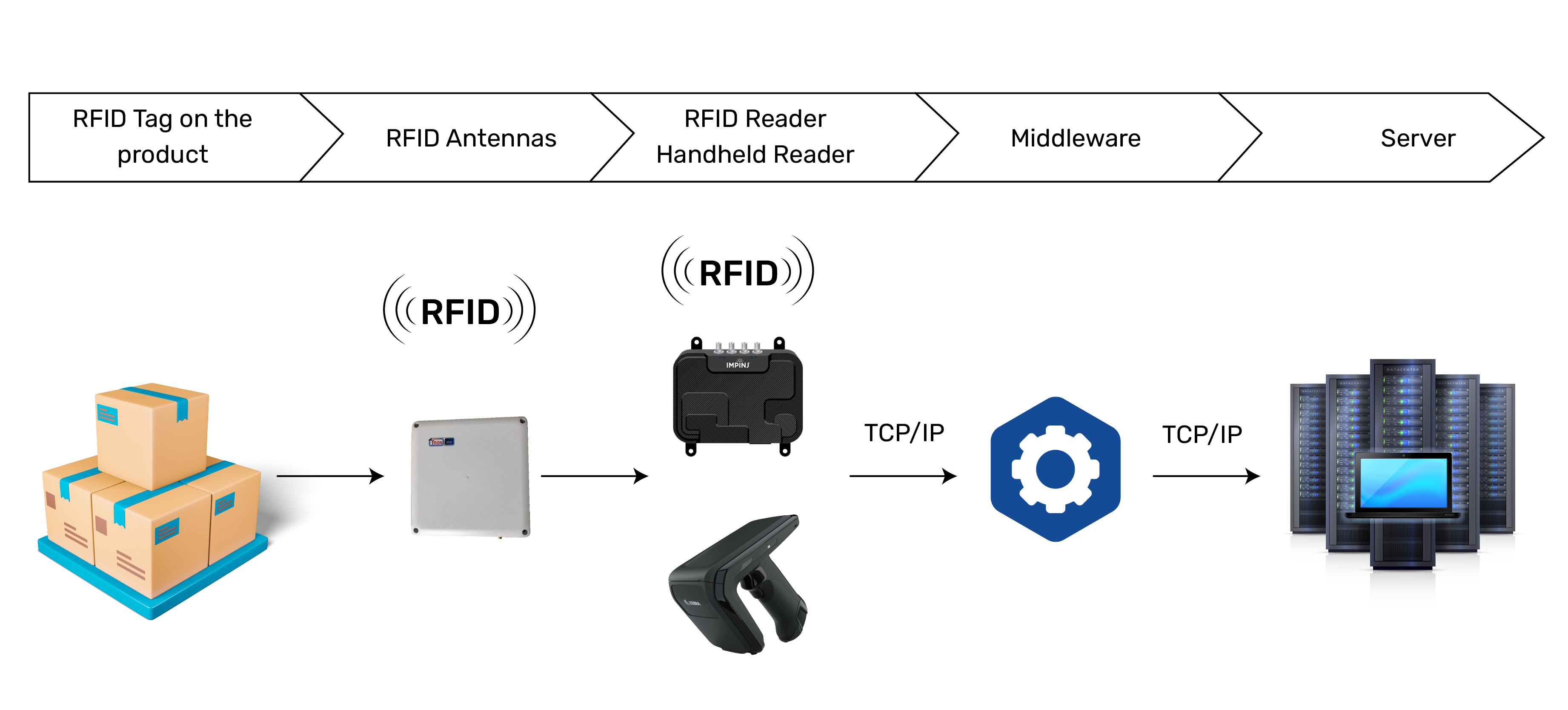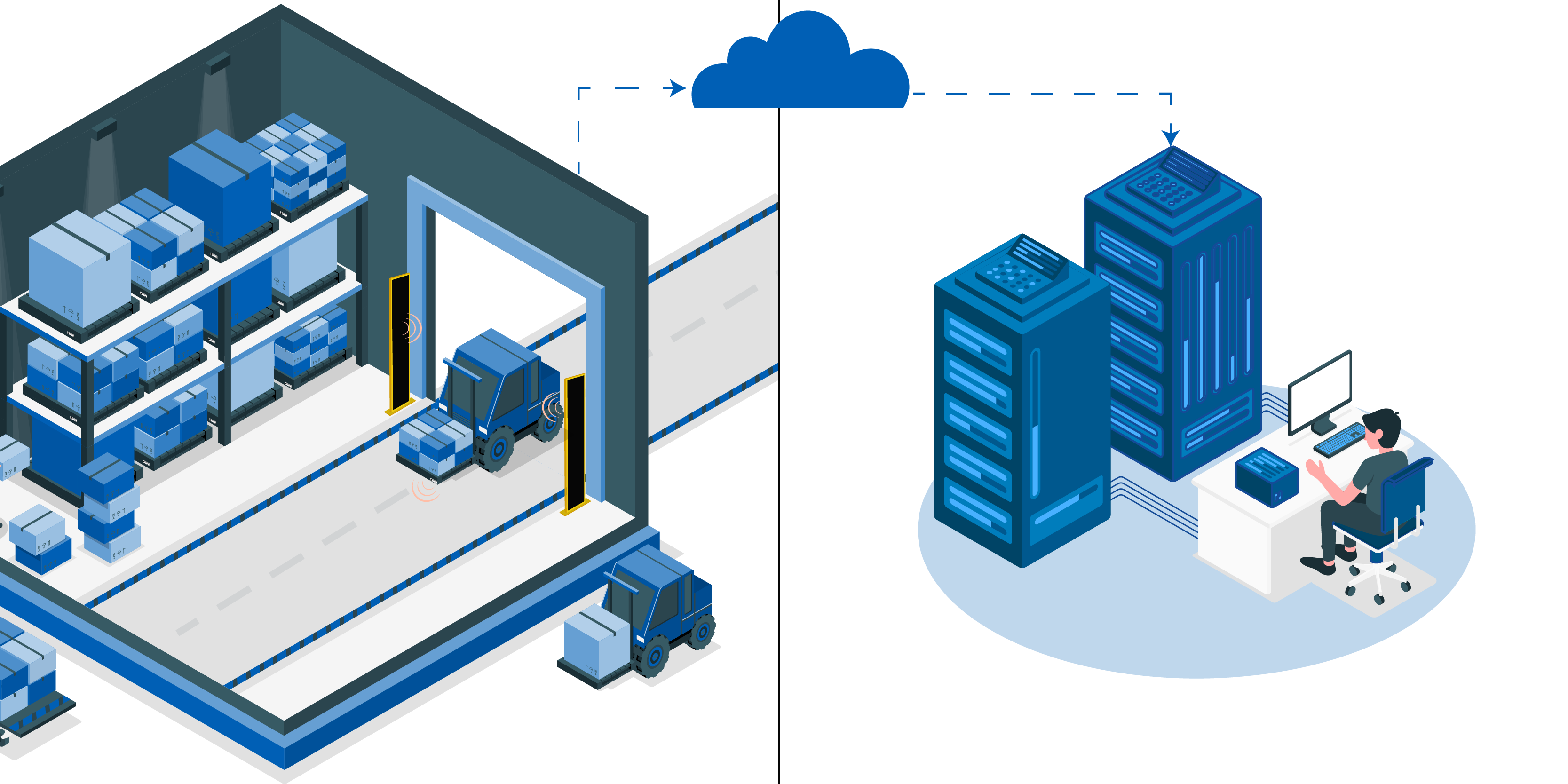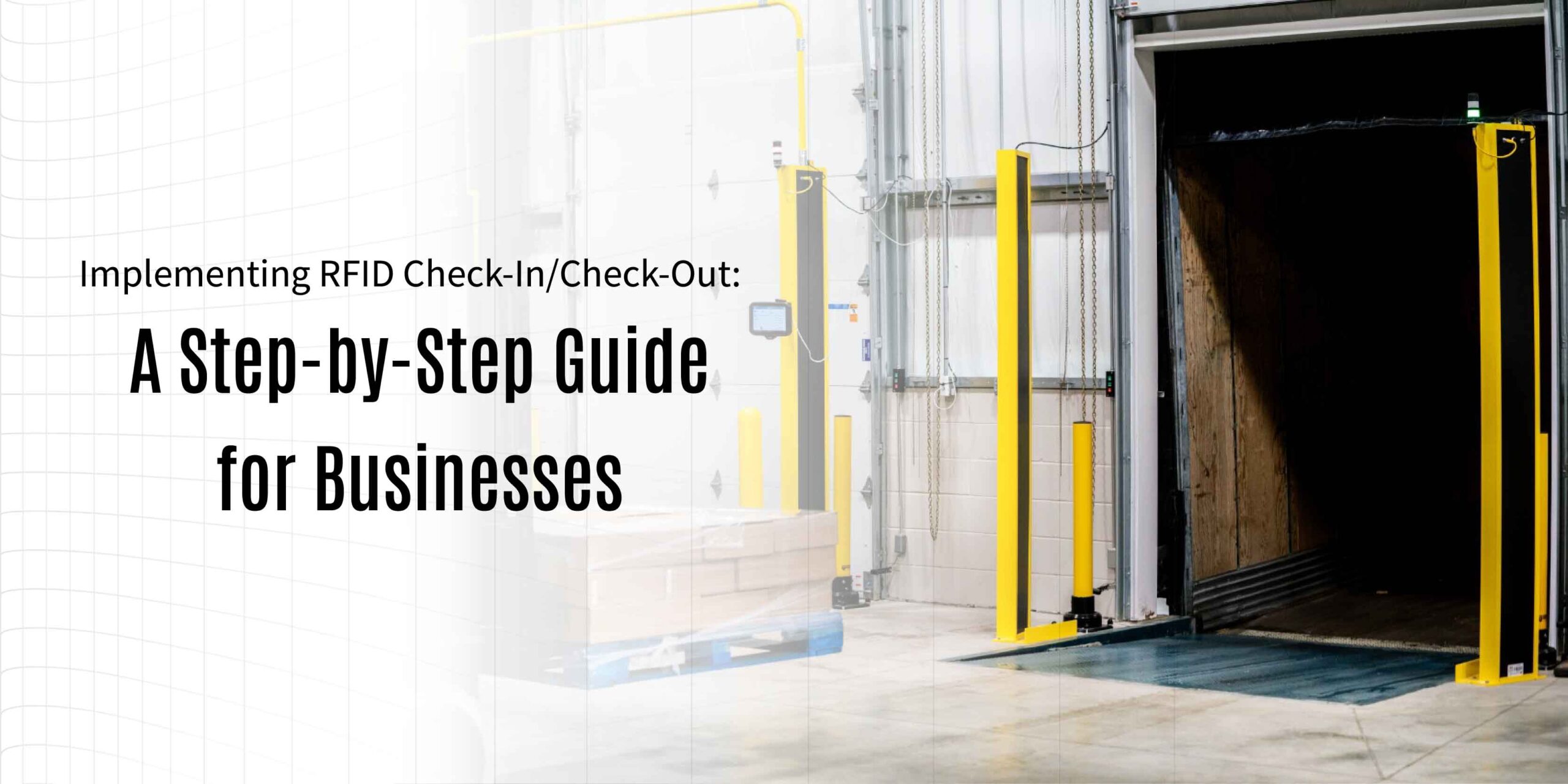Radio Frequency Identification (RFID) technology has revolutionized the way businesses manage inventory, track assets, and streamline operations. Implementing an RFID check-in/check-out system can significantly enhance efficiency, reduce errors, and improve overall productivity. This guide will walk you through the essential steps to successfully implement an RFID check-in/check-out system in your business.
Understanding RFID Technology
RFID technology uses radio waves to wirelessly identify and track objects. An RFID system typically consists of three main components:
RFID Tags: RFID tags are small components of an RFID system that play a crucial role in radio frequency identification (RFID) systems by storing and transmitting information about the items to which they are attached.
RFID Readers: RFID readers are essential components of an RFID system, responsible for emitting radio waves that communicate with RFID tags to read the information stored on them. These devices can be either fixed or mobile, depending on the application and environment. Fixed RFID readers are typically installed at specific points, such as entry and exit gates, to monitor the movement of tagged items. Mobile RFID readers, on the other hand, offer flexibility and can be used to scan items in various locations. The readers work by sending out a radio frequency signal that activates the RFID tags within their range. Once activated, the tags transmit their stored data back to the reader, which then processes and sends this information to a central database for tracking and management purposes.
RFID Software: This software processes the data collected by RFID readers and integrates it into business systems.
Define Your Objectives
Before diving into the implementation, it’s crucial to define your objectives. What do you hope to achieve with the RFID system? Common goals include:
- Improving inventory accuracy
- Reducing check-in/check-out times
- Enhancing asset tracking
- Minimizing human errors
Clearly defined objectives will guide your implementation process and help measure success.
Conduct a Feasibility Study
Evaluate the feasibility of implementing an RFID system in your business. Consider factors such as:
Cost: Assess the initial investment and ongoing maintenance costs.
Infrastructure: Determine if your current infrastructure can support RFID technology. Compatibility: Ensure that the RFID system is compatible with your existing software and hardware.
Compatibility: Ensure that the RFID system is compatible with your existing software and hardware
Select the Right RFID Hardware

Choosing the right hardware is critical for the success of your RFID system. Consider the following:
RFID Tags: When selecting the right RFID tags for tracking items, it’s important to choose the right type based on the environment and the material of the items. On-metal RFID Tags are designed to work effectively on metal surfaces, which can otherwise interfere with radio signals. These tags have a special design to ensure reliable performance even when attached to metal objects. Non-Metal RFID Tags are suitable for items made of materials like plastic, wood, or cardboard. They are versatile and can be used in various applications where metal is not involved.
Rugged RFID Tags are built to withstand harsh conditions, such as extreme temperatures, moisture, and physical impact. They are ideal for use in industrial settings, outdoor environments, or any situation where the tags need to endure tough conditions. By choosing the appropriate type of RFID tag, you can ensure accurate and reliable tracking of your items.
RFID Readers: When selecting RFID readers, it’s crucial to consider the range and the ability to read multiple tags simultaneously. For fixed readers, ensure they have the necessary communication ports, such as Ethernet or USB, and antenna ports to extend the read range. These readers are ideal for environments where tags need to be read over a larger area, like warehouses or retail stores. If you need mobility, handheld RFID readers are a great option. They often come with additional features like 2D barcode scanning and various communication options, including Bluetooth, USB, or HID (Human Interface Device).
Antennas: Ensure that antennas are strategically placed to maximize coverage and minimize interference. Antenna polarization is an important factor; linear polarized antennas are ideal for applications where tags are consistently oriented, while circular polarized antennas are better for environments where tag orientation varies. The ruggedness and thickness of the antennas should match the environmental conditions they will face. For instance, rugged antennas are necessary for industrial settings where they might be exposed to harsh conditions. Ensuring the right combination of antenna type, polarization, and RF cables will lead to a more efficient and effective RFID system.
Environmental Impact
Consider the environmental impact of your RFID implementation:
Sustainable Materials: Choose RFID tags made from sustainable materials
Energy Efficiency: Opt for energy-efficient RFID readers and infrastructure.
Recycling Programs: Implement recycling programs for used RFID tags and equipment.

Develop a Detailed Implementation Plan
Create a comprehensive implementation plan that outlines each step of the process. Key elements to include are:
Timeline: Establish a realistic timeline for each phase of the implementation
Budget: Allocate a budget for hardware, software, installation, and training.
Resources: Identify the team members responsible for each task and ensure they have the necessary skills and training.
Pilot Testing
Before full-scale deployment, conduct a pilot test to identify any potential issues. This involves:
Testing Hardware: Before proceeding with full-scale deployment, it’s crucial to conduct a pilot test to identify and address any potential issues. This involves thoroughly testing the hardware, particularly ensuring that RFID tags and readers function correctly within your specific environment. By doing so, you can verify that the RFID system operates as expected under real-world conditions, allowing you to detect and resolve any compatibility or performance issues early on. This step is essential to ensure a smooth and successful implementation, minimizing the risk of disruptions or failures during the actual deployment.
Software Integration: Verify that the RFID software integrates seamlessly with your existing systems.
Process Validation: Test the check-in/check-out process to ensure it meets your objectives.
Full-Scale Deployment
Once the pilot test is successful, proceed with full-scale deployment. This includes:
Installing Hardware: Once the pilot test is successful, you can move forward with full-scale deployment. This involves installing the necessary hardware, such as RFID readers, antennas, and tags, throughout your facility. Proper installation ensures comprehensive coverage and optimal performance of the RFID system, facilitating efficient tracking and management of assets or inventory.
Configuring Software: Customize the RFID software to match your business processes.
Training Staff: Provide comprehensive training to employees on how to use the new system.
Monitoring and Optimization
After deployment, continuously monitor the system to ensure it operates smoothly. Collect data on key performance indicators (KPIs) such as:
- Check-in/check-out times
- Inventory accuracy
- System uptime
Use this data to identify areas for improvement and optimize the system accordingly.
Ongoing Support and Maintenance
Regular maintenance is essential to keep your RFID system running efficiently. This includes:
Software Updates: Keep the RFID software up to date with the latest features and security patches.
Hardware Maintenance: Regularly inspect and maintain RFID readers, antennas, and tags.
Technical Support: Ensure you have access to technical support for troubleshooting and resolving issues.
Advanced Considerations for RFID Check-In/Check-Out Implementation
To further enhance your RFID check-in/check-out system, consider the following advanced strategies and best practices:
Integration with Other Technologies
Integrating RFID with other technologies can amplify its benefits:
IoT (Internet of Things): Connect RFID with IoT devices to enable real-time tracking and monitoring.
Blockchain: Use blockchain for secure and transparent data management, especially for high-value assets.
Customizing RFID Tags
Depending on your specific needs, you might require customized RFID tags:
Environmental Conditions: Use rugged tags for harsh environments or waterproof tags for wet conditions.
Special Features: Depending on your specific needs, you might require customized RFID tags with special features such as sensors for temperature, humidity. These advanced RFID tags are equipped with additional sensors that can monitor and transmit environmental data in real-time. For instance, temperature-sensing RFID tags are ideal for tracking temperature-sensitive items like pharmaceuticals or perishable goods, ensuring they remain within safe temperature ranges1. Humidity-sensing RFID tags can be used in environments where moisture
Scalability Planning
Plan for future scalability to accommodate business growth:
Modular Design: Use a modular system design that allows for easy expansion.
Cloud Integration: Leverage cloud-based RFID solutions for scalable data storage and processing.
Flexible Infrastructure: Ensure your infrastructure can support additional RFID readers and tags as needed.
User Experience Optimization
Enhance the user experience for both employees and customers:
User-Friendly Interfaces: Design intuitive interfaces for the RFID software.
Mobile Access: Provide mobile access to the RFID system for on-the-go management.
Feedback Mechanisms: Implement feedback mechanisms to gather user input and continuously improve the system.
Case Studies and Success Stories
Learn from other businesses that have successfully implemented RFID systems:
Retail: Many retailers use RFID for inventory management, reducing stockouts and improving customer satisfaction.
Healthcare: Hospitals use RFID to track medical equipment and ensure the availability of critical supplies.
Logistics: Logistics companies use RFID to streamline warehouse operations and improve shipment accuracy.
Conclusion
By incorporating these advanced considerations into your RFID check-in/check-out system, you can maximize its benefits and ensure long-term success. Remember, the key to a successful implementation lies in thorough planning, continuous monitoring, and ongoing optimization.
